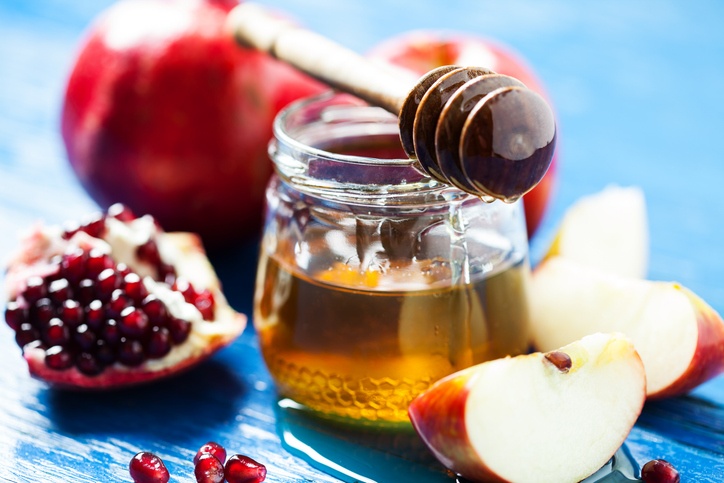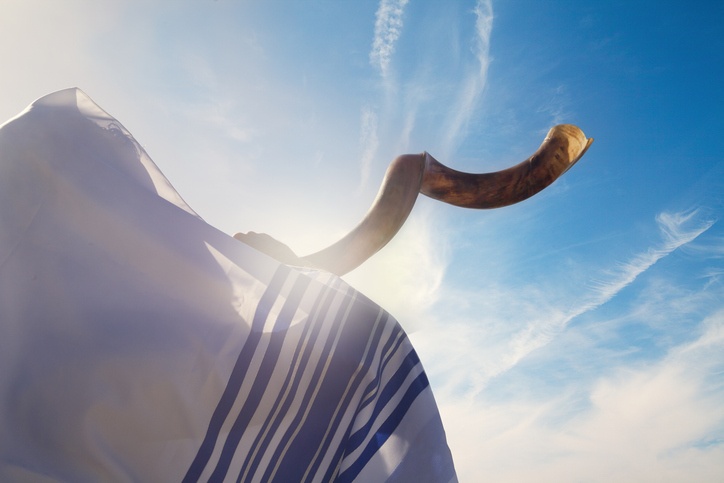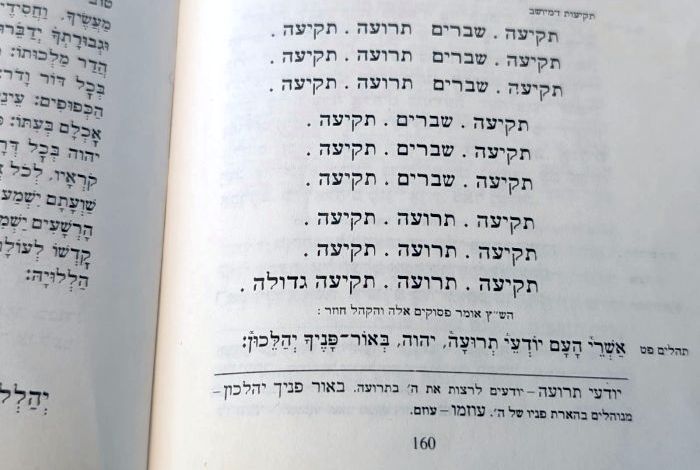
11 Aug Rosh Hashanah Guide
Rosh Hashanah: The Jewish New Year
A time to reflect, reset, and hear the blast of the shofar
- Copy Link
Rosh Hashanah: The Jewish New Year
A time to reflect, reset, and hear the blast of the shofar
- Copy Link
Rosh Hashanah kicks off the Jewish calendar with two days of celebrations and spirituality. It’s a time when Jewish communities around the world come together to seek forgiveness from one another and set intentions for the year ahead.
A Time to Reflect
Taking place on the first and second days of the Hebrew month of Tishrei, Rosh Hashanah is usually celebrated sometime in September. And unlike the secular New Year holiday on January 1st, the Jewish New Year focuses on prayer and spiritual growth.
From Hebrew, Rosh Hashanah literally translates to head of the year: “Rosh” (head) and “Hashanah” (the year). It’s also often called by a few other names, each reflecting a different aspect of the holiday: Yom Truah (Day of Blasting the Shofar), Yom HaZikaron (Day of Remembrance), and Yom HaDin (Day of Judgment).
Rosh Hashanah is referred to in the Torah in Numbers 29:1, which says, “In the seventh month, on the first day of the month, there shall be a rest day for you, a memorial proclaimed with the blast of horns, a holy convocation.”
The holiday marks the beginning of the Ten Days of Repentance (Aseret Yemei Teshuvah), which culminates in Yom Kippur, the Day of Atonement. This period is the time when God judges us, reviewing our actions from the past year before sealing those judgments on Yom Kippur.
Laws, Traditions & Their Meaning
According to Jewish sages, Rosh Hashanah may mark several big milestones:
- The creation of the world
- The birthday of humanity, established with the creation of Adam and Eve
- The binding of Isaac (Akedat Yitzchak), which is remembered in prayers and in the blowing of the shofar
Further, Jewish tradition teaches that on Rosh Hashanah, God opens three heavenly books: 1. The Book of Life, in which the righteous are inscribed; 2. The Book of Death, for the completely wicked; and 3. A third book, for those of us in between, whose fates are sealed on Yom Kippur.
The Shofar & Prayers
The shofar, a ram’s horn, is one of the most iconic parts of the holiday. It’s blown in the synagogue in a series of blasts referred to as Tekiah, Shevarim, and Truah.
And why specifically a ram’s horn? According to the Babylonian Talmud (Rosh Hashanah 16a), it’s to remind us of the ram used in the Binding of Isaac, reminding us of a story of faith, sacrifice and God’s mercy.
Before Rosh Hashanah starts, on the eve of the holiday, some communities practice Hatarat Nedarim, a short ceremony to nullify vows made impulsively or emotionally during the past year.
Then once Rosh Hashanah begins, you’ll find synagogue services are longer than usual, with extra sections in the Amidah (standing prayer), like:
- Malchuyot, which celebrates God’s kingship
- Zichronot, which remembers our actions
- Shofarot, which connects the past and future through the shofar
In the afternoon on the first day of Rosh Hashanah, many Jews perform Tashlich (“casting off”), gathering near a natural body of water to symbolically throw away their sins, often taking the form of bread crumbs, and inspired by the verse: “You will cast all their sins into the depths of the sea.” — Micah 7:19
All About the Sweet & Symbolic Foods
No Jewish holiday (except for Yom Kippur) is complete without food, and Rosh Hashanah meals are especially symbolic. Each item on the table carries a wish for the year ahead, with traditional Rosh Hashanah foods including:
Apples dipped in honey, for a sweet year ahead
Pomegranates, so that our merits may be as many as the seeds of a pomegranate
Carrots (Yiddish: meren), a pun on “increase”
Dates, Leeks or Beets, a wish to cut off or remove obstacles/evil/enemies
Rosh Hashanah recipes tend to be sweet, a nod to the sweet year we are hoping for. You’ll also likely see round challah, symbolizing the cycle of the year, or life itself.
In fact, the most common greeting used on Rosh Hashanah is “Shanah Tovah” which means “A good year.” But some say instead, “Shanah Tovah Umetukah” which means “A good and sweet year,” in an additional reference to the sweetness associated with the holiday.

New Year, New Beginning
Rosh Hashanah offers Jews an opportunity to reflect, seek growth and forgiveness, express gratitude, and take personal responsibility. It’s not just the start of the Jewish New Year, but really a spiritual reboot.
And for The Jewish Agency, the period around the High Holidays is a special time to foster bonds between Jews to each other and to Israel. We have organized innovative initiatives, such as inviting Jews globally to submit their messages of hope for the Jewish people and Israel in the New Year, so we can project them onto our historic building in Jerusalem. Plus, our educational programs serving the multitude of religious streams teach participants this information about the Jewish holidays and much more, to help Jews feel connected to one another.


